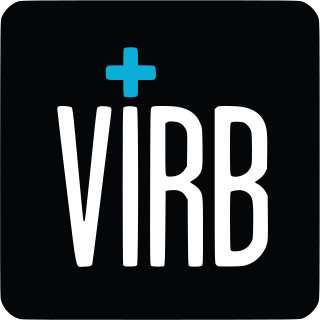Related Research Articles

Dell is an American multinational technology company that develops, sells, repairs, and supports computers and related products and services and is owned by its parent company, Dell Technologies.
Personalized marketing, also known as one-to-one marketing or individual marketing, is a marketing strategy by which companies leverage data analysis and digital technology to deliver individualized messages and product offerings to current or prospective customers. Advancements in data collection methods, analytics, digital electronics, and digital economics, have enabled marketers to deploy more effective real-time and prolonged customer experience personalization tactics.

Web 2.0 refers to websites that emphasize user-generated content, ease of use, participatory culture and interoperability for end users.
User innovation refers to innovation by intermediate users or consumer users, rather than by suppliers. This is a concept closely aligned to co-design and co-creation, and has been proven to result in more innovative solutions than traditional consultation methodologies.

The suggestion box is used for collecting slips of paper with input from customers and patrons of a particular organization. Suggestion boxes may also exist internally, within an organization, such as means for garnering employee opinion.
An ideas bank is a widely available shared resource, usually a website, where people post, exchange, discuss, and polish new ideas. Some ideas banks are used to develop new inventions or technologies. Many corporations have installed internal ideas banks to gather the input from their employees and improve their ideation process. Some ideas banks employ a voting system to estimate an idea's value. In some cases, ideas banks can be more humor-oriented than their serious counterparts. The underlying theory of an ideas bank is that if a large group of people collaborate on a project or the development of an idea that eventually said project or idea will reach perfection in the eyes of those who worked on it.
LibraryThing is a social cataloging web application for storing and sharing book catalogs and various types of book metadata. It is used by authors, individuals, libraries, and publishers.

Crowdsourcing involves a large group of dispersed participants contributing or producing goods or services—including ideas, voting, micro-tasks, and finances—for payment or as volunteers. Contemporary crowdsourcing often involves digital platforms to attract and divide work between participants to achieve a cumulative result; however, it may not always be an online activity, and there are various historical examples of crowdsourcing. The word crowdsourcing is a portmanteau of "crowd" and "outsourcing". In contrast to outsourcing, crowdsourcing usually involves less-specific, more public groups.
Co-creation, in the context of a business, refers to a product or service design process in which input from consumers plays a central role from beginning to end. Less specifically, the term is also used for any way in which a business allows consumers to submit ideas, designs or content. This way, the firm will not run out of ideas regarding the design to be created and at the same time, it will further strengthen the business relationship between the firm and its customers. Another meaning is the creation of value by ordinary people, whether for a company or not.
Crowdcasting is the intersection of broadcasting and crowdsourcing. The process of crowdcasting uses a combination of push and pull strategies first to engage an audience and build a network of participants and then harness the network for new insights. Those insights are then used to shape broadcast programming. These insights and concepts can include new product ideas, new service ideas, new branding messages, or even scientific breakthroughs. These insights are extracted from participants' submissions.
Crowdreviewing is the practice of gathering opinion or feedback from a large number of people, typically via the internet or an online community; a portmanteau of “crowd” and “reviews”. Crowdreviewing is also often viewed as a form of crowd voting which occurs when a website gathers a large group's opinions and judgment. The concept is based on the principles of crowdsourcing and lets users submit online reviews to participate in building online metrics that measure performance. By harnessing social collaboration in the form of feedback individuals are generally able to form a more informed opinion.
InnoCentive is an open innovation and crowdsourcing company with its worldwide headquarters in Waltham, MA and their EMEA headquarters in London, UK. They enable organizations to put their unsolved problems and unmet needs, which are framed as ‘Challenges’, out to the crowd to address. In the case of InnoCentive, the crowd can either be external or internal. Awards, typically monetary, are given for submissions that meet the requirements set out in the Challenge description. The average award amount for a Challenge is $20,000 but some offer awards of over $100,000. To date, InnoCentive have run over 2,000 external Challenges and over 1,000 internal Challenges, awarding over $20 million in the process.
Google Moderator was a Google service that used crowdsourcing to rank user-submitted questions, suggestions and ideas. It was launched on September 25, 2008 and shut down on June 30, 2015. The service allowed the management of feedback from a large number of people, who could vote for questions they thought should be posed from a pool of questions submitted by others or submit their own to be asked and voted on. The service aimed to ensure that every question was considered, let the audience see others' questions, and helped the moderator of a team or event address the questions that the audience most cared about. The service was nicknamed Dory internally by Google, a reference to "the fish who asked questions all the time in Finding Nemo".
ModCloth is an American online retailer of indie and vintage-inspired women’s clothing. The company is headquartered in Los Angeles.
Get Satisfaction is a customer community software platform for technical support based in San Francisco, California, United States. It was founded on January 31, 2007, by several people, including Lane Becker, Amy Muller, Thor Muller, and Jonathan Grubb. It publicly launched in September 2007. In April 2015, Get Satisfaction was acquired by Sprinklr, a social media management company.

Virb was a website owned by Media Temple that lets individuals and businesses create their own websites. Users added web content using simple tools and then customized the design of their site using built-in options or with CSS and HTML. They could also connect to networking websites such as Twitter.
Government crowdsourcing is a form of crowdsourcing employed by governments to better leverage their people's collective knowledge and experience by tapping into their ability to see connections, understand issues, and coordinate action. It has tended to take the form of public feedback, project development, or petitions in the past, but has grown to include public drafting of bills and constitutions, among other things. This form of public involvement in the governing process differs from older systems of popular action, from town halls to referenda, in that it is primarily conducted online or through a similar IT medium.

MyGov is a citizen engagement platform launched by the Government of India on 26 July 2014 to promote the active participation of Indian citizens in their country's governance and development. It is aimed at creating a common platform for Indian citizens to "crowdsource governance ideas from citizens". Its users discuss and contribute to various government projects and plans. It also allows users to upload documents in various formats. The website is hosted and managed by the National Informatics Centre (NIC). Prime Minister Narendra Modi stated that the aim was to reduce the long gap developed between the electorate and the Executive after being elected.

G2.com, formerly G2 Crowd, is a peer-to-peer review site headquartered in Chicago, Illinois. It was known as G2 Labs, Inc. until 2013. The company was launched in May 2012 by former BigMachines employees, with a focus on aggregating user reviews for business software.
References
- ↑ About Dell IdeaStorm
- ↑ O'Reilly, Tim. "Why Dell.com (was) More Enterprise 2.0 Than Dell IdeaStorm - O'Reilly Radar". radar.oreilly.com. Retrieved 2021-05-08.
- 1 2 Israel, Shel. "Dell Modernizes Ideastorm". Forbes. Retrieved 2021-05-08.
- 1 2 3 376833ml (2016-02-22). "Dell's IdeaStorm: still co-creation?". Consumer Value Creation. Retrieved 2021-05-10.
- ↑ "People Offer Better Ideas When They Can't See What Others Suggest". Harvard Business Review. 2015-07-24. ISSN 0017-8012 . Retrieved 2021-05-10.
- ↑ "To Succeed at Crowdsourcing, Forget the Crowd". INSEAD Knowledge. 2015-08-26. Retrieved 2021-05-10.
